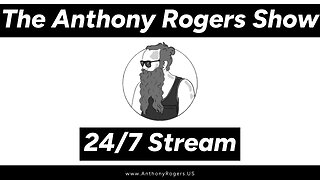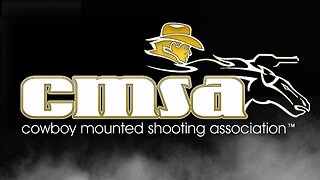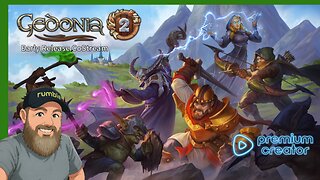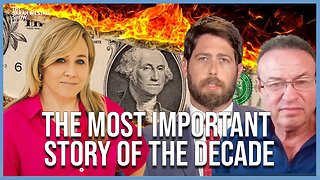Premium Only Content

HISTORY OF THE WILD HORSES OF AMERICA.
HISTORY OF THE WILD HORSES OF AMERICA.
The wild horses of the West have occupied people's minds here since they were reintroduced to the North American continent by Spanish explorers in the 16th century These early mustangs (from the Spanish mestengo , meaning "ownerless beast" or "stray horse") were the predecessors of the wild horses that today roam the desert ecosystems and grasslands of the Midwestern and Western United States.
The horses originally occupied North America, but died out around the end of the Pleistocene era (around 9,000 BC). Once reintroduced by conquerors, they quickly expanded in range and territory and were valued for their endurance, mobility, valor, and reliability during periods of conflict. One of the earliest accounts of Native Americans acquiring mustangs dates back to 1541, when Mendoza, a Spanish viceroy , gave Aztec warrior horses to fight in the Mixtón War of Central Mexico.
The Spanish were eventually driven out of New Mexico by the native Pueblo tribes, who acquired many of the abandoned animals and used them as barter with Great Plains tribes. The Plains riders came to rely on the mustang for buffalo hunting (and the increased trade opportunities that bison meat offered) and to improve the range of their camps - an advantage over other tribes. Horses became a symbol of wealth in many tribes and were valued as trophies to be won by the brave in battle. In the early 18th century, fur trappers, Indian scouts, muleteers, soldiers, and pioneers from the West came to depend on the horse as a regular part of life.
The wild horse was notable for the stubby construction of its legs, which made it suitable for traveling long distances without injury. A medium-sized horse, the typical mustang measures about 14 hands (a standard horse measurement) and weighs an average of 800 pounds. Colors ranging from black to reddish brown to sour and combinations of patterns on coats are seen. In addition to the general mustang population, two specific breeds called tarpan and Przewalski are recognized as unique genetic strains of the genus Equus that are true wild horses.
The durability of the wild horse or mustang is matched by their ability to reproduce readily: a herd population can double in size every four years. They also have no natural predators and can live up to 40 years. Their population reached an all-time high around 1918, with two million mustangs roaming North America.
With such a visible and sustained role and presence over the past 500 years, the wild horse has become deeply ingrained in our nation's psyche, even to this day. It became the symbol of the Pony Express mail service , with messengers on horseback crossing the nation from Missouri to California from April 3, 1860 to October 1861. Modes of transportation, such as the stagecoach, used herds of wild horses as a cheap and plentiful source of animals , working in teams of up to eight at a time.
On his travels westward, the American painter George Catlin (1796-1872) captured many scenes of life in the American wilderness. Often his artworks depicted Native Americans engaged in hunting, riding wild horses that had been tamed. The artist observed the animal directly on his travels and noted the valuable role it occupied.
Over the years, the wild horse took root in the American consciousness through other art forms - literature, music, advertising, and even children's toys. Generations of boys played with cowboy and Indian figures mounted on wild horses, first cast in lead and then in molded plastic in a variety of colors and sizes. Silver Age comics with titles such as Red Ryder and Tomahawk continued the tradition of wild horses as companions of Western heroes and villains.
The reality of the wild horse today is one of cautious optimism, with its continued existence in the wild at stake. Two federal agencies, the Bureau of Land Management (BLM) and the United States Forest Service (USFS) , are responsible for wild horse management on public lands. The BLM has 26.9 million acres of these lands with a total population of 88,100 horses: approximately three times the target population of 27,000 horses to maintain a healthy desert ecosystem.
The wild horse is a hallmark of Old West legends and its romanticized history and promises to remain so for generations to come.
-
 LIVE
LIVE
Anthony Rogers
1 day agoAnthony Rogers Show - 24/7 Stream
531 watching -
 2:11:55
2:11:55
Total Horse Channel
17 hours ago2025 CMSA Extravaganza | Mounted Shooting
46.6K1 -
 4:50:33
4:50:33
VapinGamers
7 hours ago $3.80 earnedGedonia 2 - Early Release Preview and Co-Stream! - !game #Sponsored
53.2K -
 1:32:39
1:32:39
Glenn Greenwald
13 hours agoWeek in Review: Trump's Tariffs, Ukraine Negotiations, Possibility of War with Iran, and More with Glenn Greenwald, Lee Fang, & Michael Tracey | SYSTEM UPDATE #438
140K59 -
 5:01:00
5:01:00
EnDuEnDo
6 hours ago🚨Vairety Stream 🎮 Push to 500 Followers 🚀 Chill Vibes 😎
25.9K1 -
 4:25:53
4:25:53
Nerdrotic
13 hours ago $38.54 earnedMarvel Is SCREWED | Daredevil Afterbirth | G20 is ABSOLUTE Cinema - Friday Night Tights 349 w MauLer
143K34 -
 56:03
56:03
BonginoReport
12 hours agoICE Boss Wants Deportations To Run like Amazon Prime - Nightly Scroll w/Hayley Caronia (Ep.25)
142K86 -
 45:12
45:12
Sarah Westall
9 hours ago“Most Important Story of the Decade” Globalists Move to Fund World Gov w/ Alex Newman & Sam Anthony
71.7K13 -
 16:23
16:23
China Uncensored
10 hours agoChina STRIKES BACK Against Trump Tariffs
36.9K8 -
 13:52
13:52
Tundra Tactical
10 hours ago $1.53 earnedDOJ's 2A Task Force: Too Little Too Late?
28.1K3